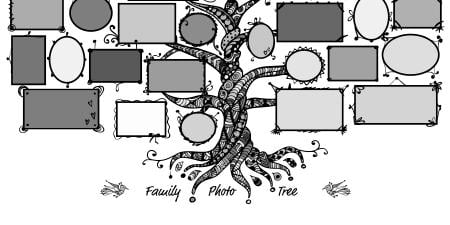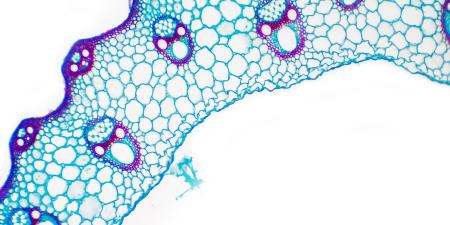Van Harrison R. Systems-based framework for continuing medical education and improvements in translating new knowledge into physicians' practices. J Contin Educ Health Prof. 2004;24(Suppl 1):S50-S62.
Grol R. Changing physicians' competence and performance: finding the balance between the individual and the organization. J Contin Educ Health Prof. 2002;22(4):244-251.
Davis NL, Willis CE. A new metric for continuing medical education credit. J Contin Educ Health Prof. 2004;24(3):139-144.
Continuing medical education (CME) is on the precipice of change. The medical community faces a widespread problem in translating rapidly changing and increasingly complex biologic and clinical knowledge into treatment modalities that can be implemented in physician practice. Although the professionals charged with executing the CME programs addressed this challenge by proposing new approaches, some of the approaches place too heavy a burden on instructors and downplay individual physician accountability.
In "Systems-based Framework for Continuing Medical Education and Improvements in Translating New Knowledge into Physician Practices," Van Harrison describes the network of players involved in updating physicians' knowledge and clinical practices and suggests ways to make the process more effective and efficient.1 Each of the systems that Van Harrison diagrams (health care environment, physicians, information, education, implementation, and regulatory oversight) has its own separate structure and funding. He points to the systems' disparate conceptualizations and vocabularies as problems in optimizing the process of expanding physician knowledge and creating clinical practice change. Van Harrison recommends both intra- and inter-system changes that require incentives for increasing efficiency within each system and cooperation among systems. He also notes that the financial burdens of good health care illustrate the need for these improvements, but that their cost is a major obstacle.
Van Harrison describes 2 models of physician change—active learning on the part of "individuals seeking solutions" and organizational directives that treat physicians as "uniform contributors to a larger process,"2 but he neglects to integrate these models when he discusses recommendations. For example, to facilitate physician use of new information, he recommends that CME instructors identify authoritative information sources and increase accessibility to them. It would have been useful here to demonstrate how physician membership societies would organize this increased volume of knowledge and resources into a practical context for individual physicians.
In "Changing Physicians' Competence and Performance," Grol foreshadows Van Harrison's multifaceted approach to change but puts more emphasis on intra-system problems (eg, the individuals and teams giving care.)3 He cites the Institute of Medicine's finding that appropriate care is generally lacking in our health care system. Grol's solution is to recognize the complex problems in good health care delivery and design plans targeting specific goals and agents. Grol also notes that individual doctors will not change unless the team and organization to which they belong are simultaneously doing so. He states that only educating physicians is not enough; CME providers and other professionals in the role of physician educators need to become better managers of change. What remains unclear is how they will produce the needed organizational change through the individual physicians who take part in CME. Grol recommends a radical shift in the understanding of the goal of CME when he suggests that the classic concept of CME is a good strategy only for providing insight into change but not in facilitating its acceptance, implementation, or maintenance.
In "A New Metric for Continuing Medical Education Credit," Davis and Willis write about how CME in practice can be better tailored to the needs of physicians and patients.4 They describe the history of CME from the perspective of licensing/regulatory bodies such as the American Medical Association and American Academy of Family Physicians and how those groups have envisioned physician learning and integration of new knowledge into practice through the years. The authors argue for a new CME metric because, they claim, credit hours (the current measure of physician education) have proven to be an inadequate reflection of patient care improvements in physician practice.
Authors of all 3 articles acknowledge the need for both individual and organizational change in CME. Moreover, they recognize that for CME to succeed in facilitating physician learning which will then translate into improved clinical outcomes, CME offerings must strike a balance between the need for rigorous, externally supervised education and the value physicians place on their professional autonomy. Davis and Willis, for example, note that the promotion of nontraditional, independent-learning CME was ill-received by many physicians in the early 1990s.4
The proposals for changing the way continuing education operates are extensive. The hierarchical, 5-level model recommended by Davis and Willis requires greater involvement on the part of CME professionals. The recommendations include "[ensuring] methods of documenting actual learning rather than participation,"5 and require that CME providers offer both quality improvement and clinical practice skills. This argument shows up in Grol as well, though he indicates that all teachers of physicians need an updated skill set and a commitment to individual learners. As yet, the topic of the considerable funds needed for teacher training and incentives remains largely untouched by these authors.
These articles are valuable descriptions and criticisms of the health care environment and CME, but they fail to specifically offer models or suggest steps for positive change. For example, Van Harrison brings up the need for "closer working relationship[s]" among professionals in the CME network and states, "The efficiencies of centralization and standardization across systems will have to be balanced with the flexibilities of decentralization and local variation."6 These points are hard to dispute, but the more relevant issue is how do professionals from different structures begin to work more closely and strike this balance? Davis and Willis claim that, "…activities will require more resources, fresh thinking, and considerable effort by the physician, CME professionals, and the health care system."5 Again, professionals in the network of systems comprising health care need clearer guidance to reach these ideals. By necessity, a cultural shift—at least within the health care environment and likely beyond—will accompany a new method for expediting changes in individual and organizational practices, and CME professionals seem poised to take on that responsibility. Who will lead this charge, and how it will be funded remains to be seen.
References
- Van Harrison R. Systems-based framework for continuing medical education and improvements in translating new knowledge into physicians' practices. J Contin Educ Health Prof. 2004;24(Suppl 1):S50-S62.
-
Van Harrison, S53.
- Grol R. Changing physicians' competence and performance: finding the balance between the individual and the organization. J Contin Educ Health Prof. 2002;22(4):244-251.
- Davis NL, Willis CE. A new metric for continuing medical education credit. J Contin Educ Health Prof. 2004;24(3):139-144.
-
Davis NL, Willis CE, 143.
-
Van Harrison, S58.



